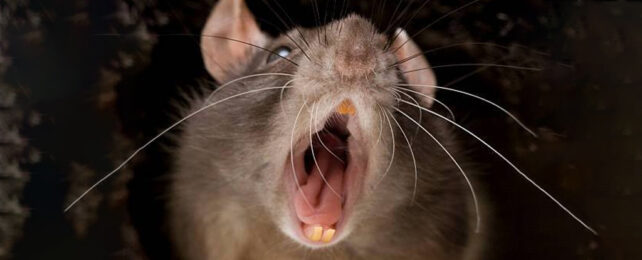We often treat animals like rats and bats as disease-ridden vermin, banishing them far from the spaces we share.
Yet a new analysis of viral genomes reveals that we humans pose far more of a threat to other animals than they do to us, passing on almost twice as many viruses to domestic and wild animals than we receive from them.
"Understanding how and why viruses evolve to jump into different hosts across the wider tree of life may help us figure out how new viral diseases emerge in humans and animals," explains University College London geneticist Cedric Tan.
Among the 32 viral families considered, researchers identified those that could infect human bodies. Counting the frequency of jumps between species, 64 percent featured a leap from humans to another animal in what's known as an anthroponotic infection.
Given how humans have made their homes in such a wide variety of environments, this tendency to pass on our pathogens so widely makes sense, Tan told Michael Le Page at New Scientist:
"Our population size is huge. And our global distribution is basically everywhere."
This gives the viruses we host far more opportunities to successfully jump ship into a greater diversity of non-human hosts compared to viruses from other species that tend to have much more restricted opportunities.
What's more, we then provide viruses an even greater chance to make this transition through our behavior. By stressing out the life around us through habitat change or destruction – including pollution and even the sound of our voices – we cause neighboring creatures to become more susceptible to viruses.
Not only is this a serious environmental concern, it's a major global health issue for our own species.
"If a virus carried by humans infects a new animal species, the virus might continue to thrive even if eradicated among humans, or even evolve new adaptations before it winds up infecting humans again," says Tan.
We've been witnessing such back and forth viral spillback events, including in wild deer and mink, during the pandemic.
Meanwhile, anthroponosis poses a massive risk to endangered species, leading to questions around the ethics of vaccinating wildlife.
"Humans are just one node in a large and complex network of hosts in which viruses are endlessly exchanged," the team writes in the paper. "81 percent of the putative host jumps identified in this study do not involve humans."
Previous research supports these findings. While there's more than 1.6 million known animal viruses, fewer than 0.1 percent from other species are known to have caused human infections.
But as we've seen with COVID-19 it only takes one virus spillover to wreak havoc. So Tan and colleagues also identified features that could warn of a virus's ability to become zoonotic.
They found the viruses more prone to jumping species displayed an increased rate of genetic changes compared to viruses that already infect a bigger range of hosts. These had lower mutation rates.
Generalist viruses must be exploiting features shared across more animals, the researchers suspect, such as the ACE2 host-cell receptor (which COVID-19 exploits) that all vertebrates possess. Such viruses in animals we interact with likely pose the highest risk to us.
"Large gaps in the genomic surveillance of viruses thus far suggest that we have only just scratched the surface of the true viral diversity in nature," warn Tan and team.
"Overall, our results highlight the importance of surveying and monitoring human-to-animal transmission of viruses, and its impacts on human and animal health."
This research was published in Nature Ecology & Evolution.
